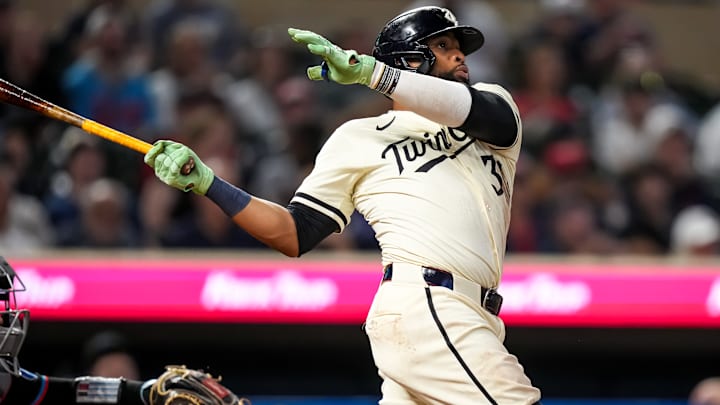It is no secret that the New York Yankees are actively seeking reinforcements on the offensive side, hence the Cody Bellinger acquisition. Bellinger clearly fills a hole in a right-handed heavy lineup, but one bat is unlikely to fill the Juan Soto hole of production. Upgrading at first base was the next priority for Brian Cashman and company, as they signed Paul Goldschmidt of the Cardinals in hopes that his leadership skills and .799 second-half OPS would lead to a bounce back campaign. But should the Yankees have looked elsewhere?
Bellinger, according to manager Aaron Boone, is still anoption at first base, as well as left field and center field. If he opts into his 2026 contract, it's possible he'll shift to first to accommodate the idealized addition of Kyle Tucker.
Bellinger has played a bit of first base the past two seasons with Chicago, but spent most of his time patrolling center field or as the DH. Still, his athleticism and above-average speed make a multiple position role enticing. The Yankees will likely stick Bellinger in the outfield for now, but before locking into Goldschmidt, they examined several alternatives.
Did Yankees pick correctly when they chose Paul Goldschmidt for first base?
Carlos Santana, a 15-year veteran, likely would've been the least expensive outside option. Santana has long been known for his patience (.354 career OBP) and power (324 career home runs). But, in his 15th season, Santana took another jump, winning his first Gold Glove, posting a +14 Outs Above Average according to Baseball Savant. Santana walked at a 10.9% clip in 2024, below his extraordinary 14.1% career walk rate. For a Yankees' lineup that returns just one player above a .330 OBP (Aaron Judge), patience is a much-needed virtue. Santana signed with Cleveland on a one-year, $12 million deal on Saturday evening, just $500,000 below Goldschmidt's pact.
Beyond Goldschmidt is Ben Rice, who had a rude introduction to the big leagues last season. Rice stepped to the plate 178 times in 2024 and slashed an ugly .171/.264/.349, "good" for a 73 wRC+. Still, a couple factors point to a positive turnaround. For one, Rice's xWOBA was a solid .340, which would have been in the upper quartile of qualified hitters. Rice also showed great plate discipline, posting an 11.6% walk rate, and chased at a miniscule 20.6% rate. So, based on batted ball metrics and other indicators, Rice is due for a bit of a rebound. Still, a team with championship hopes cannot realistically rely on a rookie with awful career big league numbers, small sample be damned. He will likely be platooned with Goldschmidt, and it would've been tough to justify naming him the team's starter in this current window.
Both Christian Walker and Pete Alonso were examined on the free agent market. Both have declined their Qualifying Offer, tying a draft pick to both. Also on the negative side, both hit right-handed. With the current construction of their lineup, taking on more righties long-term may not be the best idea for Boone and company. Walker is one of the better fielders at first base, and brings above-average offense to boot. For three straight seasons, Walker has posted at least a 3.0 fWAR, and a minimum wRC+ of 119. On top of the draft pick, FanGraphs' Crowd Sourcing put Walker's next deal at $18 million AAV; he'll head to the Astros for three years and $60 million.
Alonso, excluding the shortened 2020 season, has posted at least a 2.1 fWAR in every season he's played, yet the slugger has failed to match the production in his 2019 Rookie of the Year campaign, where he bashed 53 home runs, a 144 wRC+, and a .384 wOBA. This is not to say that Alonso has not been a productive player on the offensive side of the ball. Outside of 2021, where he posted a +4 Outs Above Average, Alonso has been a below-average defender. Factor in a projected $25 million AAV by FanGraphs' Crowd Sourcing, and Alonso was always an unlikely, yet attractive option in the Bronx. He'll likely be a Met moving forward.
In terms of trade options, Josh Naylor was the most frequently rumored trade target for Brian Cashman. Naylor has been a thorn in the pinstripes' side for a few years now, including an infamous bout with Gerrit Cole in the 2022 playoffs. Naylor is a solid defender, posting a +11 Outs Above Average at first base since 2020. Outside of his rookie season in 2019, Naylor has struck out under 20% of the time, and has posted three straight above-average offensive seasons. Rather than spending money (and potentially a draft pick) on free agents, Naylor's one season of team control would cost prospect capital. Given that Naylor will be a free agent after 2025, no marquee prospects would've likely needed to exchange teams. Instead, Cleveland likely would have targeted a mid-level arm and/or a power hitter in return. Naylor was dealt to the Arizona Diamondbacks on Saturday night, six hours after the Goldschmidt signing became official. All he cost was a controllable reliever and a Comp Round B draft pick.
Cleveland is rather well-regarded for their pitching development, but the team has struggled to develop homegrown power. Sabier Marte, who will play next season at 21, would've been a name to keep an eye on in a return after a 2.76 ERA in 49 innings on the Florida Complex. Marte has traits that Cleveland covets (present command and projection), and is still years away from meaningful innings. He may be a future target for Cleveland down the road (in, say, a Triston McKenzie trade).
Spots like this is where Brian Cashman has earned his legacy as a savy roster constructor. Losing out on Soto and Kyle Tucker has afforded a bit of creativity for the league's longest-tenured GM. These next few months should be a Cashman masterclass. He opted for flexibility in Goldschmidt this time around.
